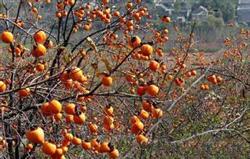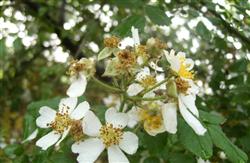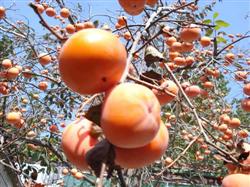How to manage persimmon orchards in summer

The summer management of persimmon orchard should pay attention to the following points: first, fruit sparse and astringent persimmon from mid-May to early June, sweet persimmon from early June to early July, after the end of physiological fruit drop, according to the proportion of 20: 25 leaves to keep strong young fruits free of diseases and insect pests, the fruits to be removed are deformed fruits, diseases and insect pests, fruits on branches less than 15 cm in length or less than 5 leaves, fruit on the base of fruiting branches and fruits on branches. 2. Annular peeling for adult fruit trees, an annular peeling was carried out in the middle and last ten days of May. The method is to cut a band 2mm 3mm wide on the trunk ring with a sharp knife and gently cut it longitudinally with the tip of the knife without harming the xylem, and then gently pick up and peel off the narrow bark with the tip of the knife. The purpose of annular peeling is to prevent carbohydrates produced by persimmon leaves during photosynthesis from being transported to the roots in order to strengthen the fruit. 3. Weeding and irrigation in the middle ploughing according to the growth of weeds, weeding in the middle ploughing for 2 times, and persisting in shallow hoeing 7 cm under the canopy and 25 cm deep hoe outside the canopy. When there is a drought from July to August, it is necessary to irrigate and fight drought in time. Where there is no intercropping persimmon garden should be fully covered with grass, can preserve soil moisture and fertilizer, prevent weeds and cold, sunburn, improve the soil, but dry weather should pay attention to fire prevention. Fourth, topdressing is the peak season for persimmon growth from May to June, and the root and shoot growth ability is strong. For 1-year-old and 2-year-old young trees, the amount of fertilizer applied per plant is 20 grams of pure nitrogen, 10 grams of calcium superphosphate and 20 grams of potassium chloride. The amount of fertilizer applied per plant of 5 years old was twice as much as that of 1 ~ 2 years old. The amount of fertilizer applied per mu of adult fruit trees is 4 kg of pure nitrogen (7.8 kg of urea), 4 kg of calcium superphosphate and 4 kg of potassium chloride. Outside the vertical drip line of the crown, 5 cm to 10 cm of the young tree and 15 cm to 20 cm of the adult fruit tree, dig a circular trench with a width of 20 cm and a depth of 20 cm. Generally choose in cloudy or sunny days before 9: 00 in the morning, after 5: 00 in the afternoon, apply the above three kinds of fertilizer, and then fill the soil to cover. The main diseases and insect pests in persimmon orchard are round spot, angular spot, anthrax and powdery mildew. These diseases can be sprayed with 0.3: 0.5 pomethyl sulphur mixture or 50% topazine powder 800-1500 times spray, or 1-100 Bordeaux liquid spray. The main pests are persimmon caterpillar, beetle, persimmon stem worm, blood spot leafhopper, persimmon shoot moth and so on. 40% omethoate 500 × 1000 times liquid or 50% potassium ammonium phosphorus 1000 times solution can be used for spray control. The diamondback moth can be controlled by spraying 600-800 times liquid of crystal dipterex.
- Prev

Management of Persimmon before and after flowering
The management of persimmon before and after flowering persimmon belongs to light-loving crops. Close planting should pay attention to ventilation and light transmission, which is the main measure of high-yield management. Persimmon results in axillary buds, so it is very important to remove strong long branches and strengthen nutrient accumulation of branches and stalks. Pay attention to amino acid coating before flowering to promote flower bud differentiation and overcome size.
- Next

Key points of fertilization techniques in Persimmon Orchard
The main cultivation and management techniques are: 1. Implement "three reforms" 1.1 to transform the garden: most of the terraced fields in the adult mountain persimmon orchards have no stem in front and no ditch behind, the Mesa is low before and after high, the soil erosion is serious, and the root system is exposed. Transform the garden, that is, the terrace of the persimmon garden has a ridge in front and a ditch in the back, and the front ridge is 10 ~ 15% high.
Related
- Moge, come on! The staff of the peasant association in the producing area of cantaloupe were frightened when the crowd gathered.
- Causes and Solutions of low Fruit setting rate of Apple
- Symptoms and control measures of passion fruit virus disease
- Fruit growing lesson: how do apple orchards keep high yields?
- Can you build orchards in the mountains? What are the pros and cons?
- How to manage the coloring period of Crisson grape?
- This paper introduces the processing technology of two kinds of fig products.
- How much is a month for retired teachers in rural areas by 2020?
- How can strawberry planting increase sugar content? We should pay attention to management in many aspects.
- What are the cultivation techniques on how to improve the yield of golden fruit?

